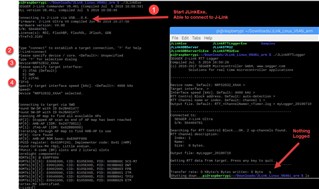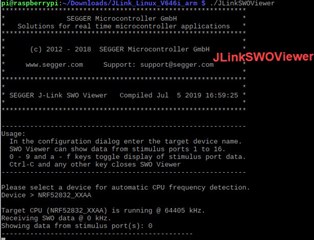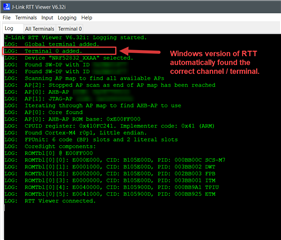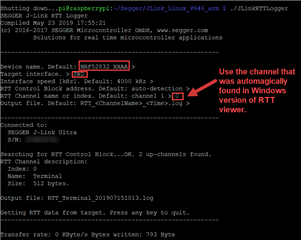[EDIT] The solution is posted in one of my replies.
I'd like to set up a programming and test station for the nRF52832. Segger JLink tools work fine in Windows, but I'd like to use an inexpensive Raspberry Pi for ease of distribution to other places. Specifically, I want to use RTT logging and use J-Flash to program nRF52832.
Segger's J-Link software provides a version for ARM hosts computers, which seems to run on the Raspberry Pi (PI 3B+, using Stretch version of Raspbian). But I'm confused about the actual commands I need to enter. According to a couple of previous posts, I need to have "JLinkExe" running first on one window, and then start RTT program on another?
I tried the following (shown in screen shots attached)
1) connect
2) specify target device. I used the identifier in the pull down available on the Windows UI for Jlink. "NRF52832_XXAA"
3) defaults for the rest of the settings, just press enter. It seems to find the nRF52832 attached to a segger j-link. So that's good.
Then I started "JLinkRTTLogger", but as you can see from the attached screen shot, nothing is logged. I also wanted to try the equivalent of RTTViewer, but looking at the Linux ARM software, I'm confused what that equivalent would be. There is "JLinkRTTClient", which just shows elipses when I run it, and "JLinkSWOViewer", which seems to connect, but doesn't show any output. I'm fairly certain that there should be RTT output when I'm doing these tests.
Overall, the LInux ARM version of J-Link utilities don't have a UI, and I'm having trouble figuring out what I'm suppose to do via command line to view RTT output.







